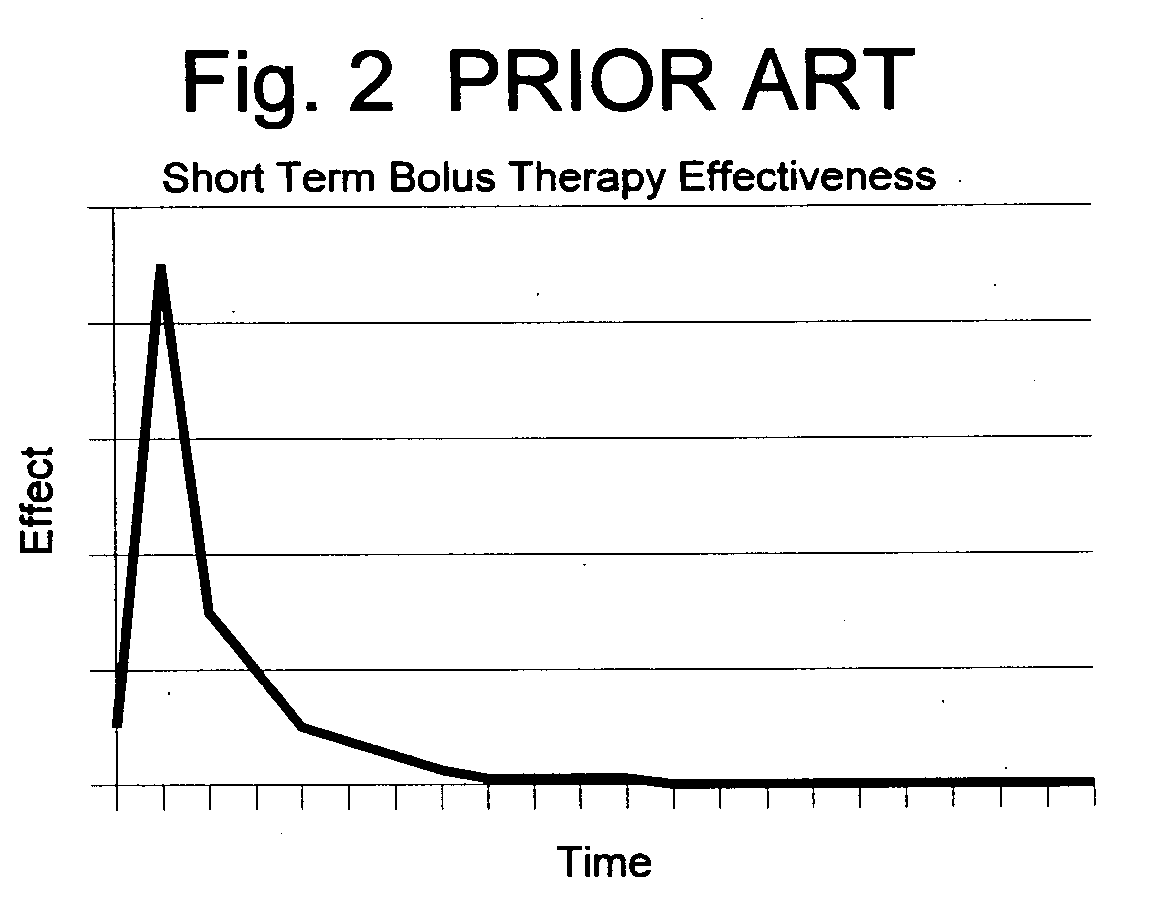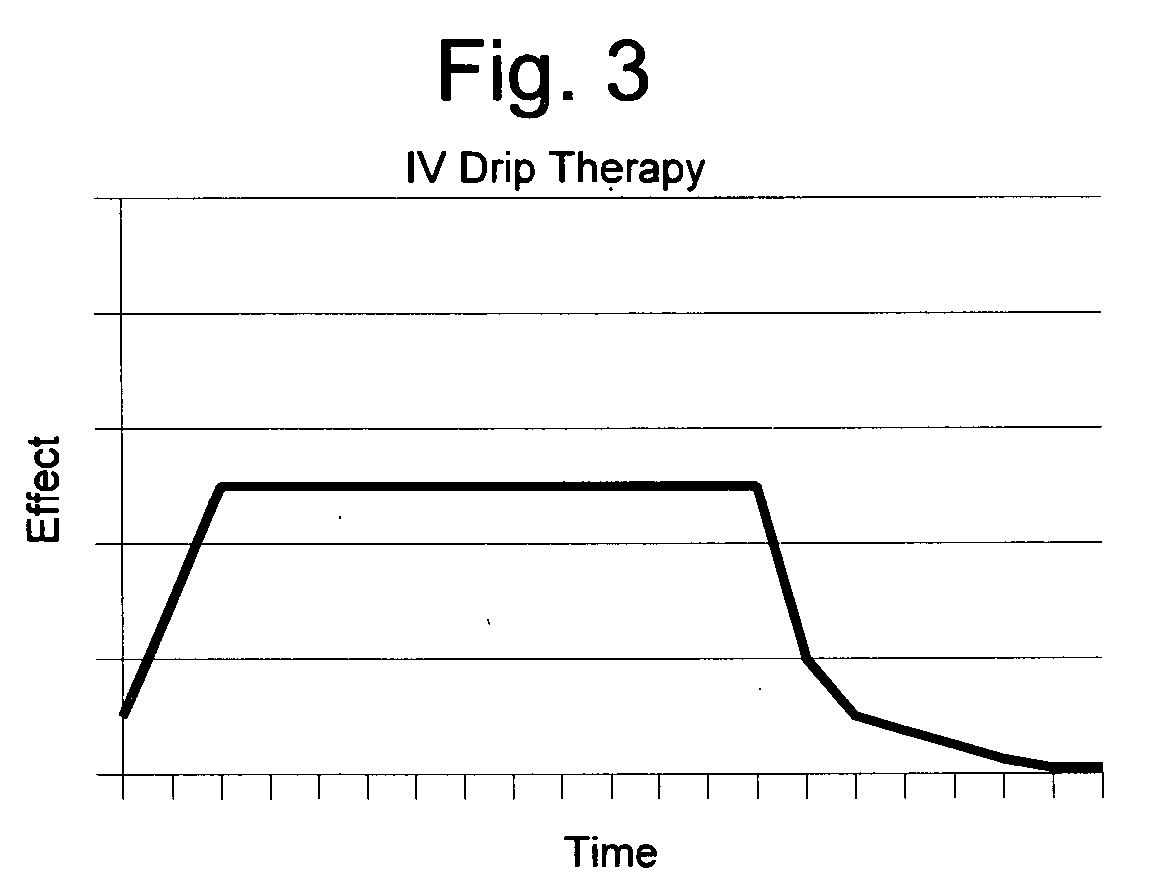High potency clinical anti-craving treatment and method of use
a clinical and high-potency technology, applied in the field of anti-craving treatment for patients, can solve the problems of affecting the ability of active agents to cross the blood/brain barrier, and affecting the likelihood of systemic overload. the effect of fast
- Summary
- Abstract
- Description
- Claims
- Application Information
AI Technical Summary
Benefits of technology
Problems solved by technology
Method used
Image
Examples
Embodiment Construction
[0096] The invention provides an anti-craving medication whose active agents are selected to overcome the physical barriers to efficient use which exist in the bodies of individuals suffering from substance abuse; that is the agents are selected so as to allow efficient use of the medication by such a body of an individual suffering from substance abuse. The result is a medication offering high overall efficacy.
[0097]FIG. 1 is a bar graph showing comparative recidivism rates of the present invention versus counseling only treatment regimes. Recidivism rate, that is, the percentage of patients treated who return to substance abuse during or after treatment is a key measure of the overall efficacy of substance abuse medications. A lower recidivism rate is therefore much better than a higher recidivism rate. As stated earlier and shown on FIG. 1, counseling alone does not have a very high success rate: fully 70% of patients relapse at least once into substance abuse. While testing and...
PUM
| Property | Measurement | Unit |
|---|---|---|
| Time | aaaaa | aaaaa |
| Mass | aaaaa | aaaaa |
| Mass | aaaaa | aaaaa |
Abstract
Description
Claims
Application Information
 Login to View More
Login to View More - R&D
- Intellectual Property
- Life Sciences
- Materials
- Tech Scout
- Unparalleled Data Quality
- Higher Quality Content
- 60% Fewer Hallucinations
Browse by: Latest US Patents, China's latest patents, Technical Efficacy Thesaurus, Application Domain, Technology Topic, Popular Technical Reports.
© 2025 PatSnap. All rights reserved.Legal|Privacy policy|Modern Slavery Act Transparency Statement|Sitemap|About US| Contact US: help@patsnap.com



